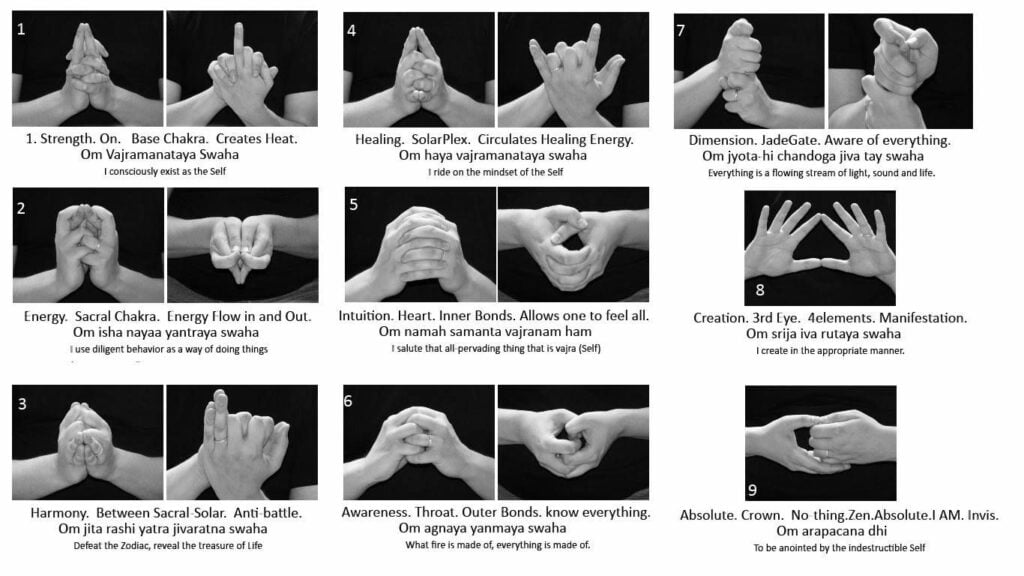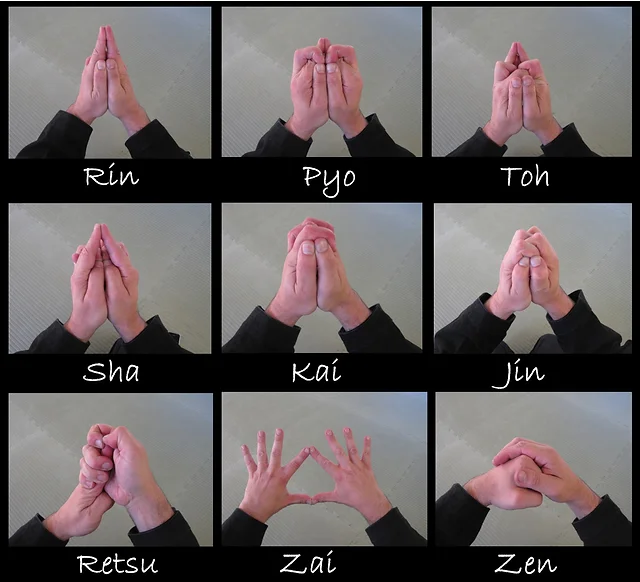In Ninjutsu, ancient hand spells, or hand signs, are called “Kuji-in” and have deep roots in Buddhism. These hand signs are believed to have the power to invoke spiritual energy and to protect the practitioner from harm. They are used in many traditional Ninjutsu techniques, such as meditation and healing practices.
Buddhism, which is a major influence on Ninjutsu, teaches that the mind and body are interconnected, and that specific hand gestures, called “mudras,” can be used to channel energy and attain a deeper state of awareness. Many of these mudras are similar to the hand signs used in Ninjutsu, further emphasizing the connection between the two practices.

One example of a hand sign used in both Ninjutsu and Buddhism is the “Gassho” mudra, which is made by pressing the palms together with the fingers pointing upwards. This mudra is believed to promote peace and harmony, and is often used in meditation and prayer. In Ninjutsu, the Gassho mudra is used to focus the mind and to invoke spiritual energy for protection.
Another example is the “Shaka” mudra, which is made by pressing the thumb and index finger together, with the other fingers extended. This mudra represents the teaching of the Buddha and is often used in rituals and ceremonies. In Ninjutsu, the Shaka mudra is used as a symbol of spiritual power and to invoke blessings.
In conclusion, ancient hand spells are a fundamental part of Ninjutsu and its relationship with Buddhism. The hand signs used in Ninjutsu are believed to have spiritual power and protect the practitioner from harm. They are deeply rooted in the mudras of Buddhism, which is one of the main influences on the practice of Ninjutsu. These hand signs are an essential component of the training and meditation in Ninjutsu, connecting the practitioner to the spiritual energy that surrounds us all.

